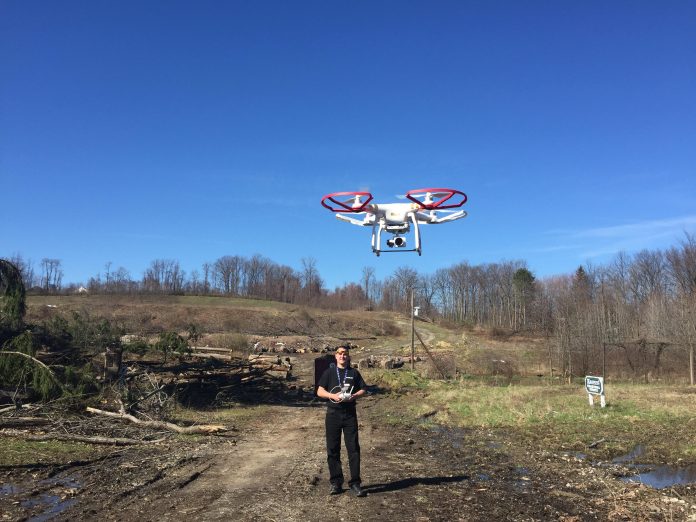If you see a drone flying by, don’t shoot it. Gary Miller is working with the police and fire department to use his drone to fly over certain areas of town. Before he does one of these “fly overs” he calls the Macedonia police dispatch department. He follows all of the FAA rules and regulations.
Gary Miller is the Current Vice-chairman of Cleveland Society of Broadcast Engineers (SBE). Chapter 70. He has experience in video production, editing, he specializes in industrial documentaries, public safety services, sporting events, automotive industry, utilizing special effects computer animation programs, power point and video integration. In his spare time he is the National Football League (NFL) as Co-Primary Game Day Coordinator.
The History and Future of Drones
Drones were first introduced by the U.S. military but once the average citizen became enthralled by this device, things have exploded with their use. The development of small video cameras and lithium batteries have opened up a whole new world for the masses. People could now see a different perspective of an event that was actually happening in real time. The potential to capture images and inspect inaccessible areas has helped its growth.
The most common drones are the RPAs or Remote Piloted Aircraft, which the average person might purchase through a store. They weigh less than 55 pounds and are classified by the number of rotor blades (1 – 8 blades). The Quadrotor (4 blades) and the Octorotor (8 blades) are the most commonly used. The other type of drones are UAVs or Unmanned Aerial Vehicles, which are used mostly by the military.
The one problem with this device is the lack of clear cut regulations by the U.S. and other countries. There lies the confusion of who is accountable for what and to whom! The FAA is developing regulations for this technology for commercial as well as consumer sectors, but it has been slow to act in this area. Some of the limitations that the FAA is looking into is flying after dark, above certain altitudes, out of the operator’s line of sight, near structures and densely populated areas. Another area that seems to be of some concern is grouping all drones in one category. The hope is to break down the drone’s size, weight and blades into smaller categories. Another area of contention is requiring some operator’s to be a license pilot. The FAA is hoping to have more permanent regulations by 2016 or 2017.






















